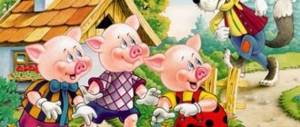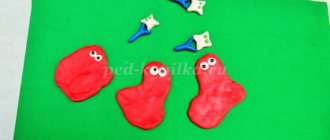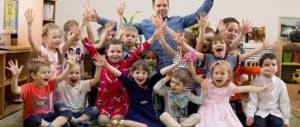School performance.
School performance. The first months of school after the long summer holidays are especially difficult for children. Again we have to get used to early morning rises. Get used to strict discipline at school and the demands of teachers. In addition, you will have to do homework and, possibly, attend additional classes and clubs.
In general, there is a whole year of hard work ahead. And the faster the child tunes in to the learning process, the faster he “gets into the groove,” the easier and simpler it will be for him to learn throughout the year.
And today we will talk about additional clubs and sections that will help us with this. Or more precisely, about those sports that improve school performance.
Groups of sports
Basic Olympic sports in Russia are usually divided into five general groups. In turn, they represent a division from high-intensity physical activity to low-energy activity.
Let us list these five groups in order:
- Under the first group are sports that involve high intensity use. This includes most species. The final result depends directly on the physical capabilities of the body.
- The second group will mark those who play sports while sitting in the saddle or on the seat of a high-speed Formula 1 car, for example. That is, these are those sports that require high vehicle control skills.
- The final result is not so much the actions of the athlete, but his final result - this definition is typical for the third group of basic sports in Russia. This may include objects of modeling and design activities.
- The fourth group includes shooting sports. Such as clay pigeon shooting, air rifle shooting, bow shooting, pistol shooting, etc.
- And finally, the last column contains abstract views. It is not difficult to guess that the winner here is not the one who is physically stronger, but the one who is mentally superior to his counterpart.
Let's move on to the list of basic sports.
Relevance of the topic.
At the beginning of the last century, Sukhomlinsky V.A. noted that “learning lag is only the result of poor health.” Nowadays, modern children grow and develop in the era of computer technology. And they spend most of their time on gadgets, sitting at home. This lifestyle interferes with the normal physical development of the child, causing enormous harm to health.
Although at the same time, most parents believe that it is better for the child to be at home at the computer than somewhere unknown. And they can be understood. In our difficult times, where there is rampant crime, drug addiction and alcoholism, parents are at least somehow trying to protect their children from all this. Or rather, from bad companies where their child may end up. But with all this, you need to understand: you won’t hide him from this world forever.
In general, the result is the same - everything should be in moderation. And in a child’s life there should be a place for games, sports, studies, and computers.
Sports sections and clubs are perhaps the best solution in this situation. And communication with peers, and a club of interests, and physical development, and health promotion and, as a result, good performance at school.
After all, in sports, a child learns not only to play a game, but also to work in a team. Learn tactics and strategy. Learns to win and lose. Thanks to sports, a child develops endurance and perseverance. Sport teaches you to make independent decisions, not only in the game, but also in life.
Summary of an hour of physical activity with elements of sports in the middle group
Bibliographic description:
Tarasova, T. L. Summary of an hour of physical activity with elements of sports in the middle group / T. L. Tarasova, M. Yu. Trufanova, E. S. Shevtsova. — Text: direct // Questions of preschool pedagogy. — 2020. — No. 10 (27). — P. 104-106. — URL: https://moluch.ru/th/1/archive/145/4658/ (access date: 10.10.2020).
Goal: to instill interest in sports games and game exercises with a ball.
educational : to form elementary actions with the ball for football and basketball: throwing, throwing, rolling;
developing: develop coordination abilities, dexterity, eye;
educational: to cultivate interest in activities with the ball;
recreational: involve children in sports.
Equipment : balls according to the number of children, one ball with eyes and a mouth, basketball, football, tennis balls, hoops, goals.
1. Organizational and orientation stage
Educator. Hello guys! I am very glad to see you healthy and cheerful. I really want you to remain in this mood until the end of our lesson.
If everyone smiles -
Good morning will begin.
- Good morning!
2. Motivational and orientation stage.
Educator. Guys, today a guest came to our lesson, and you will find out who this guest is if you guess the riddle:
It can be basketball
Volleyball and football.
Jumps, jumps, flies
And he doesn’t know fatigue.
(Ball)
- That's right, it's a ball.
The teacher shows the ball (pasted eyes, “sad” mouth).
3. Search stage.
Educator. Look guys, our ball is sad.
- Why do you think he is sad?
Children. The ball is sad that they are not playing with it.
Educator. How can we help the ball become cheerful?
Children. Play with him.
Educator. What games can you play with a ball?
Children. Toss, catch, roll, etc.
Educator. What sports games are played with a ball?
Children. Football, volleyball, basketball, etc.
The teacher shows soccer and basketball balls.
— Guys, do you know what sports games these balls are needed for?
Children. For football and basketball. (Show balls)
Educator. Tell a poem about a soccer ball.
Child. The boys play it in the yard.
The kids are lucky to score goals.
You can only kick the ball with your foot.
And only the goalkeeper can touch it with his hand.
Educator. Tell a poem about a basketball.
Child. To become such an athlete, you need to grow up a lot.
And be able to move the ball across the floor without stopping.
To then throw it far and high
And get into the basket, earning a point.
Educator. Guys, what sports games do you think we will play today?
Children. Football and basketball. (plan - put pictures on an easel, sports games football, basketball).
4. Practical stage.
Educator. Today we will play sports games with a ball, but first we need to warm up.
Walking and running one after another, walking with high knees.
Game exercise “The guys have strict order.” Children stand in a column one at a time. At the signal, they scatter across the site. Saying the words “The guys have a strict order, they know all their places, well, trumpet more cheerfully: tra-ta-ta, tra-ta-ta!” With the last words, the children run and take their places.
Educator. Our funny ball
He can't lie like that.
He asks the kids
Play with him some more.
— The balls must be inflated and elastic. Let's pump them up before we play with him.
Breathing exercises “Pumps”
I.p. - stand up straight, lower your arms down to the floor, slightly rounding your back, legs slightly narrower than shoulder width, lower your head, do not pull or strain your neck. Take a short, noisy breath. The inhalation should end with the bending. Raise yourself slightly, but do not straighten, and bend again with a short, noisy sigh.
Educator. I invite basketball players to training.
- Game exercise “Catch it, don’t hit it” - children stand scattered around the playground with balls in their hands. At the signal, they catch the balls after throwing them up.
- Game exercise “Pass the potatoes” - children stand in 2 lines, opposite each other, and on command pass the balls from one end of the line to the other.
- Game exercise “Don’t drop it” - children stand in ranks facing each other. At a signal, they throw the balls to each other with both hands from the chest.
Educator. I invite football players to training.
- Game exercise “Ride” - children stand in 2 lines, facing each other. At the signal, the children pass the ball to each other with their feet.
- Game exercise “Ball into the goal”. Children stand in 2 columns and take turns kicking the ball into the goal.
- Game exercise “Don’t lose it” - children stand near the hoop. At the signal, they kick the ball around the hoop.
Independent activity of children.
One subgroup of children throws balls into the hoop, the other scores the ball into a football goal.
Game “Which ball is missing?” The teacher shows 3 balls of different sports (soccer, volleyball, tennis). Children close their eyes, and the teacher hides one of the balls.
5. Reflective-evaluative stage.
Educator. Guys, were we able to please our guest?
— Has the ball become fun? (the ball smiles).
— What sports games did we play?
- Which exercise was the easiest?
— Which exercise was difficult to perform?
—Which exercise was the most fun?
6. Follow-up.
Educator. In the next lesson we will repeat sports games with a ball. We’ll also play with the smallest of sports balls—tennis balls.
Key terms
(automatically generated)
: ball, teacher, game exercise, child, friend, game, What exercise, kick ball, ball, guys.
Swimming.
Emotional stability
Strong immunity
Swimming is a sport that is based on exercise and movement in the water without any support devices. The benefits of swimming are so great that in medicine these activities are used as a means to treat various diseases. Well, for a schoolchild this is simply an ideal solution:
Firstly, swimming is the safest sport. The fact is that in water the load is evenly distributed across all muscle groups and joints. There is no excessive stress on the joints and muscles, which sometimes leads to injury. During swimming, active training of almost all muscle groups occurs. The muscles of the arms, shoulder girdle, buttocks, thighs, and abdomen are especially well trained. In addition, swimming forms correct posture, which is an ideal prevention of spinal curvature.
Secondly, swimming has a beneficial effect on the process of forming a child’s personality. During classes, the child develops such qualities as discipline, perseverance, courage, endurance, determination and perseverance. But it is precisely on these qualities that a child’s future academic success largely depends. The child becomes more attentive, focused, and less distracted by extraneous activities. Which certainly has a beneficial effect on your studies.
Thirdly, this sport helps strengthen the nervous and cardiovascular systems. It develops the respiratory system and is a good tool for strengthening bone tissue. In addition, swimming classes normalize blood circulation. As a result, blood flow to the brain improves, which has a beneficial effect on the child’s intellectual development. Regular swimming strengthens the body and strengthens the immune system.
Thus, systematic swimming lessons have a calming effect on the nervous system, increasing the emotional stability and mental performance of the child. And as a result - performance at school.
LiveInternetLiveInternet
Quote from gyord-pro-ladies
Read in full In your quotation book or community!
New Modern Sports
Football, hockey, basketball... These sports have millions of fans around the world. But sports can be interesting regardless of its popularity. As proof of this, there is a selection of non-mainstream sports.
Petanque.
An unusual name, but a simple game, the essence of which is to throw special balls as close to the target as possible. They play it outdoors. The surface of the site should be covered with a dense layer of gravel and granite dust. In France, pétanque is considered the national game and ranks third in popularity after football and tennis.
Novus.
It was invented by people yearning for billiards.
Having modified a few things, the creators retained the principle of the famous game. The area of the table in novus is one meter per meter, and puck-shaped chips are used instead of balls. Well, the cue, of course, is much smaller. The first tables were 80x80cm in size, and athletes of the 'KALEV' society competed in this game, but as a result of improving gaming practice, the table dimensions were changed and in 1929 the first industrial batch of sets of this game was produced in the amount of 500 copies measuring 100x100cm, which is modern standard for gaming equipment. In the early years of the development of this sport, there were no uniform rules. According to some rules, the winner was the one who pocketed the most pawns in a limited time, while according to others, the winner was the one who pocketed all the pawns in fewer hits. Aquathlon.
Fight underwater.
Initially it originated as a special system for training sailor divers. It is based on Sambo techniques. Aquathlon is divided into three areas: sports, combat, and gymnastics. Aquathlon (underwater wrestling) (from Latin “aqua” - water, ancient Greek “аtlon” - wrestling) is an underwater sports discipline. Aquathlon is a competition between two athletes in the water, their goal is, during a fight in the water and under water (while holding their breath), to take possession of the opponent’s ribbon attached to his ankle. The ring measures 5 x 5 m, with a depth of 2 to 6 meters. Iceclimbing.
Almost mountaineering, only the object used is not mountains, but blocks of ice.
Iceclimbing is a relatively young form of extreme sport. At its core it represents mountaineering, with one exception. The object used is not blocks of mountain, but blocks of ice. Ice climbing appeared in Russia several years ago. It is not yet widespread. The main center of iceclimbing in Russia is the Tver region. Underwater navigation.
The same as normal orienteering, only underwater.
Being at a depth of no more than two meters with scuba gear, you need to go through a certain route. In parallel with this, filming is carried out using a special underwater camera, or, for example, an AdvoCam-FD3 video recorder, which is previously hidden in a pressurized box from the Action Kit. All this is done in order to minimize the weight of the athlete’s equipment. The competition program includes various individual and group exercises. Competitions are held in open water. This is a military applied sport. We are well developed in the Voronezh, Novosibirsk, Smolensk, Rostov, Saratov regions in Russia. BASE jumping.
One of the extreme types of entertainment consists of parachuting from tall buildings, bridges and other stationary objects.
The main danger of this type of jumping is that the base jumper does not have time to open the reserve parachute in case of malfunction, as well as the risk of colliding with the object from which the jump is made. The free flight phase of base jumping lasts only a few seconds. BASE jumpers love to record their jumps on video cameras. Not many people take the risk of taking a camera with them on such a flight, but the same AdvoCam, due to its compact size, will help you capture excellent footage. The ancestor of base jumping is parachuting. However, unlike skydiving from aircraft, BASE jumping occurs from much lower altitudes and the fall occurs in close proximity to the object from which the jumper is jumping. Due to the low altitude, the falling speed when performing jumps very rarely reaches such speeds as in parachuting. During the fall, skydivers use the air flow to stabilize them, which gives them the opportunity to assume the correct body position before opening the parachute. When performing a BASE jump, the jumper falls at a lower speed, and therefore has less chance of being stabilized by the air flow and, in the worst case, can go into an uncontrolled rotation. Grass-ski.
Austrian skiers love their sport so much that even in summer they are not ready to part with it, so they came up with skiing on grass.
Grass-ski lovers traverse the green alpine meadows on skis equipped with tracks, which allow them to “glide” over the grass. The skis are also equipped with bindings and a high platform. The grass on the skiing field should not exceed five centimeters. Sliding on grass skis is only possible forward. Sideways sliding is excluded. To make a turn, the rider has to perform a maneuver similar to an alpine skiing “clean carved turn.” Braking is very difficult, because lateral sliding is not possible. Therefore, the main type of braking is driving up a hill. Sandboard.
Sand skiing was invented by residents of countries where there is no snow.
The basis of sandboarding is surfing. Sandboarding originated in the 60s. Sandboard (literally “sand board”) - a board designed for riding on sandy slopes. It is a board with sandal fastenings for the feet. The front part of the board has become slightly wider than that of a regular skateboard, but the back part, on the contrary, is narrowed so that the skater can wiggle, turn sharply and maneuver. What unusual sport would you risk doing?)
International System of Mutual Financial Assistance
All the Most Useful
Athletics.
Perseverance
Endurance
Athletics is a sport that involves running, walking, jumping and throwing. Systematic athletics training develops strength, speed, endurance, perseverance, flexibility and agility. It is these qualities that improve a child’s performance at school.
In addition, athletics has a positive effect on the nervous and cardiovascular systems, protecting children’s fragile bodies from stress and depression. In addition, regular classes help relieve fatigue after stressful schoolwork. They provide an opportunity to unwind psychologically and gain additional energy for the future. As a result, the child’s sleep and general well-being improve, mental performance and creative capabilities increase.
Athletics activities add self-confidence and increase a child's self-esteem, which also has a beneficial effect on school performance.
In addition, athletics not only improves the child’s health, but also contributes to harmonious physical development and the development of moral and volitional qualities.
Hockey
Hockey follows soccer on this list. The thing is that the Russian team has been famous for its strong base in this sport since the times of the USSR. Starting from the hockey super series against the Canadians, ours showed power and spirit, which no team could demonstrate against the founders of the stick and puck. We will definitely mention the last Olympic Games, when our athletes won gold medals.
To become a professional hockey player, you need to spend a lot of time and effort on preparation. Despite good individual qualities, hockey is a team game. Unity of the team is the fundamental essence of victory.
As you know, in the West there is the National Hockey League (abbreviated NHL). But even in the CIS, due to the high popularity and growing interest in hockey, an alternative was created in the form of the Continental Hockey League (abbreviated KHL).
Undoubtedly, hockey has been and will continue to develop in the future, so we will expect new victories from the Russian squad.
Gymnastics.
Coordination of movements
Harmonious physical development
Gymnastics is a set of specially selected exercises aimed at improving health, improving a child’s abilities and harmonious physical development.
Gymnastics promotes the comprehensive development of the child’s body and improves coordination of movements. And improving the coordination of movements has a positive effect on the development of concentration. As a result, the child becomes more attentive, focused, and less distracted by extraneous activities.
Systematic exercises develop endurance, flexibility and plasticity, and form an athletic figure. In addition, gymnastics promotes the formation of correct posture.
By doing gymnastics, a child develops self-discipline, willpower, and endurance, which has a beneficial effect on his studies. Such children adapt more easily to society, they have high self-esteem, they are self-confident and sociable.
Thus, gymnastics provides good physical development, high coordination of movements, which accelerates the mental development of the child.
Be healthy!
Read: “Fatigue in schoolchildren”.





